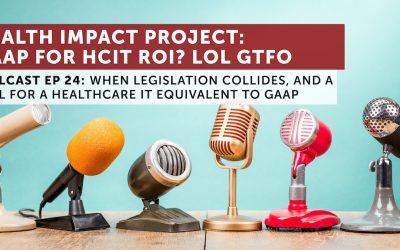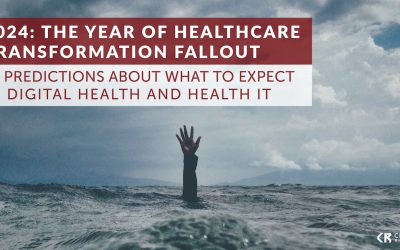Healthcare in the United States faces many problems, but one of the bigger ones is bringing the right stakeholders to the table when it’s time to try to solve a problem. Often, the empty chair should be occupied by an individual – the overwhelmed patient, the uncompensated caregiver, the burned-out doctor or nurse. Rarely is an institution not represented.
That’s why the recent Accenture recent white paper (PDF) on the role of patient-generated health data (PGHD) in contributing to clinical research and improving healthcare delivery left me scratching my head. The document sets forth a good roadmap for developing federal policy, and it examines the role of the individual clinician in using PGHD, but it omits a key stakeholder: The healthcare organization (HCO) itself.
First, a bit of background. The Office of the National Coordinator for Heath IT contracted with Accenture in October 2015 to draft a white paper that ONC would use to develop a policy framework for capturing, using, and sharing PGHD. Such a framework is called for in ONC’s 2015 interoperability roadmap, which set the ambitious goal of achieving interoperability by 2024. Accenture completed its research in October 2016 and published a draft of the white paper last month. Public comments are welcome; no deadline has been stated.
Admittedly, the white paper is clear on what needs to happen: PGHD needs to make its way into the clinical record so that care teams can make more informed decisions, patients can better engage with individual physicians as well as HCOs at large, and medical research can expand its reach far beyond the four walls of an institution. This will allow healthcare to shift from herky-jerky episodic care to more continuous longitudinal care.
So far, so good. However, the white paper goes on to identify researchers, clinicians, and patients and caregivers as the key stakeholders in the use of PGHD. Policymakers, technology vendors, and payers and employers are the secondary stakeholders. Provider organizations are mentioned in passing but not identified as major stakeholders.
The policy framework focuses on the needs and challenges of individual medical professionals without addressing the larger needs of the institutions that employ them. Consider, for example, the characterization of organization-wide use of PGHD:
Innovative health care organizations have incorporated the use of PGHD into their current workflows in ways that prevent burdening the care team with extra work or overwhelming them with extraneous data. The care team needs to share responsibilities among team members to reduce the burden of collecting, verifying the quality and provenance, and analyzing PGHD. Some organizations have assigned specific members of the care team to review PGHD, determine where to store the data, notify providers of abnormal values, and respond to the patient. In the future, the EHR will be able to f
acilitate PGHD review, helping to simplify the clinician workflow.
Incorporating PGHD into current workflows, sharing responsibilities, and assigning care team members to view data (when it is likely not part of their training) takes years of internal review and discussion – to say nothing of assuming that EHRs will all of a sudden accept PGHD and at the same time simplify the clinical workflow when, to date, they have done neither.
Considering the extent to which HCOs will be expected to collect, curate, normalize, store, secure, analyze, interpret, and share PGHD, either directly or indirectly, it’s irresponsible for a policy framework, even in its draft form, to gloss over the challenges and opportunities that providers face. HCOs need to be part of that conversation. If anything, they should host that conversation.
Show me the (criteria that must be met in order to receive the) money!
Of course, this isn’t the first time that federal health IT policy has descended from Washington with little input from HCOs. Previous policies worked, at least to a certain extent, because explicit incentives and penalties came along with them. (Some of the most popular content from my days as a journalist explained the intricacies of meaningful use criteria and deadlines, complete with hand-coded tables.)
As written, the PGHD policy framework mentions HCO incentives only in the context of new payment models – specifically, their “incentives to monitor a patient’s health status outside of an office visit to reduce the need for face-to-face encounters and to reduce patient use of emergency and inpatient care.”
It’s an implicit incentive, not an explicit one. That means it’s not going to attract the attention of burned-out doctors or nurses being asked to take on yet another uncompensated task, not to mention frazzled HCO leaders wrestling with tight budgets, tighter margins, and growing expectations.
Incentives and penalties will certainly get HCOs to notice. Crafting them will be difficult, though. Rewarding HCOs for using data from connected, healthy patients (like yours truly) will “check the box” but won’t move the needle on VBC. Insisting that all data come from disconnected, unhealthy patients (like the millions who require continuous longitudinal care) will doom PGHD initiatives before they can even start.
Understanding how to write those policies, and then putting them into place, will be a heck of a lot easier if HCOs themselves have a say in what they look like. And that will be a heck of a lot easier if HCOs have a say in what the final PGHD policy framework looks like.





0 Comments